FOD3180 Optocoupler: Application, Circuit, Datasheet
OPTOISO 5KV 1CH GATE DRIVER 8DIP
This article will unlock more details of FOD3180, a MOSFET Gate Driver Optocoupler. Furthermore, there is a huge range of Semiconductors, Capacitors, Resistors and ICs in stock. Welcome RFQ.

Isolated power supply with FOD3180 gate driver.
FOD3180 Pinout
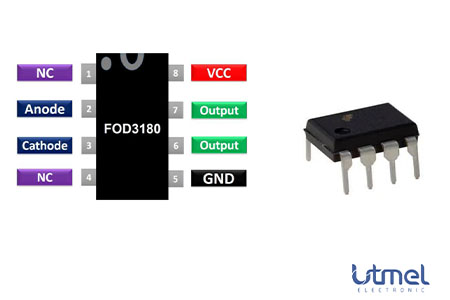
FOD3180 Pinout
| Pin Number | Pin Name | Description |
| 1 | NC | No Connection - Cannot be used |
| 2 | Anode (A) | Anode pin of the IR LED. Connected to the logic input |
| 3 | Cathode (C) | Cathode pin of the IR LED |
| 4 | NC | No Connection - Cannot be used |
| 5 | Ground | Ground pin of the IC |
| 6 | Output | The output pin of the Optocoupler |
| 7 | Output | The output pin of the Optocoupler |
| 8 | Vcc | Powers the IC |
Pin Description
FOD3180 CAD Model
Symbol
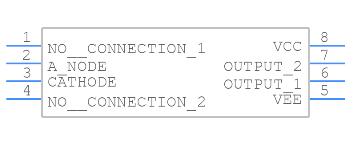
FOD3180 Symbol
Footprint
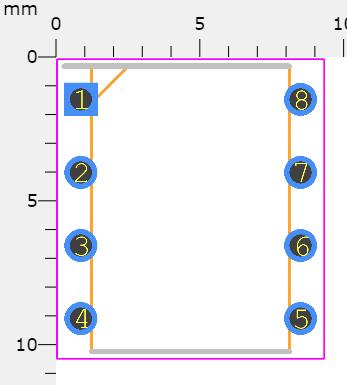
FOD3180 Footprint
3D Model
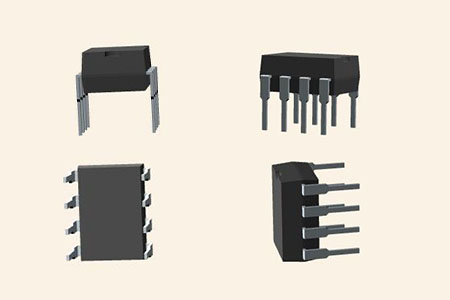
FOD3180 3D Model
What is FOD3180?
The FOD3180 is a MOSFET Gate Driver Optocoupler that is used to separate two circuits. It's a MOSFET Optocoupler with three components: an AlGaAs infrared emitting diode, output power transistors, and a CMOS detector that detects infrared light.
Specifications
- TypeParameter
- Lifecycle Status
Lifecycle Status refers to the current stage of an electronic component in its product life cycle, indicating whether it is active, obsolete, or transitioning between these states. An active status means the component is in production and available for purchase. An obsolete status indicates that the component is no longer being manufactured or supported, and manufacturers typically provide a limited time frame for support. Understanding the lifecycle status is crucial for design engineers to ensure continuity and reliability in their projects.
ACTIVE (Last Updated: 4 days ago) - Factory Lead Time5 Weeks
- Contact Plating
Contact plating (finish) provides corrosion protection for base metals and optimizes the mechanical and electrical properties of the contact interfaces.
Tin - Mount
In electronic components, the term "Mount" typically refers to the method or process of physically attaching or fixing a component onto a circuit board or other electronic device. This can involve soldering, adhesive bonding, or other techniques to secure the component in place. The mounting process is crucial for ensuring proper electrical connections and mechanical stability within the electronic system. Different components may have specific mounting requirements based on their size, shape, and function, and manufacturers provide guidelines for proper mounting procedures to ensure optimal performance and reliability of the electronic device.
Through Hole - Mounting Type
The "Mounting Type" in electronic components refers to the method used to attach or connect a component to a circuit board or other substrate, such as through-hole, surface-mount, or panel mount.
Through Hole - Package / Case
refers to the protective housing that encases an electronic component, providing mechanical support, electrical connections, and thermal management.
8-DIP (0.300, 7.62mm) - Number of Pins8
- Weight891mg
- Number of Elements1
- Operating Temperature
The operating temperature is the range of ambient temperature within which a power supply, or any other electrical equipment, operate in. This ranges from a minimum operating temperature, to a peak or maximum operating temperature, outside which, the power supply may fail.
-40°C~100°C - Packaging
Semiconductor package is a carrier / shell used to contain and cover one or more semiconductor components or integrated circuits. The material of the shell can be metal, plastic, glass or ceramic.
Tube - Published2008
- JESD-609 Code
The "JESD-609 Code" in electronic components refers to a standardized marking code that indicates the lead-free solder composition and finish of electronic components for compliance with environmental regulations.
e3 - Pbfree Code
The "Pbfree Code" parameter in electronic components refers to the code or marking used to indicate that the component is lead-free. Lead (Pb) is a toxic substance that has been widely used in electronic components for many years, but due to environmental concerns, there has been a shift towards lead-free alternatives. The Pbfree Code helps manufacturers and users easily identify components that do not contain lead, ensuring compliance with regulations and promoting environmentally friendly practices. It is important to pay attention to the Pbfree Code when selecting electronic components to ensure they meet the necessary requirements for lead-free applications.
yes - Part Status
Parts can have many statuses as they progress through the configuration, analysis, review, and approval stages.
Active - Moisture Sensitivity Level (MSL)
Moisture Sensitivity Level (MSL) is a standardized rating that indicates the susceptibility of electronic components, particularly semiconductors, to moisture-induced damage during storage and the soldering process, defining the allowable exposure time to ambient conditions before they require special handling or baking to prevent failures
1 (Unlimited) - ECCN Code
An ECCN (Export Control Classification Number) is an alphanumeric code used by the U.S. Bureau of Industry and Security to identify and categorize electronic components and other dual-use items that may require an export license based on their technical characteristics and potential for military use.
EAR99 - Additional Feature
Any Feature, including a modified Existing Feature, that is not an Existing Feature.
UL RECOGNIZED - Max Power Dissipation
The maximum power that the MOSFET can dissipate continuously under the specified thermal conditions.
295mW - Approval Agency
The parameter "Approval Agency" in electronic components refers to the organization responsible for testing and certifying that a component meets specific safety, quality, and performance standards. These agencies evaluate products to ensure compliance with industry regulations and standards, providing assurance to manufacturers and consumers. Approval from recognized agencies can enhance a component's marketability and acceptance in various applications, particularly in sectors like automotive, aerospace, and healthcare. Common approval agencies include Underwriters Laboratories (UL), International Electrotechnical Commission (IEC), and the American National Standards Institute (ANSI).
cUL, UL - Voltage - Isolation
Voltage - Isolation is a parameter in electronic components that refers to the maximum voltage that can be safely applied between two isolated points without causing electrical breakdown or leakage. It is a crucial specification for components such as transformers, optocouplers, and capacitors that require isolation to prevent electrical interference or safety hazards. The voltage isolation rating ensures that the component can withstand the specified voltage without compromising its performance or safety. It is typically measured in volts and is an important consideration when designing circuits that require isolation between different parts of the system.
5000Vrms - Output Voltage
Output voltage is a crucial parameter in electronic components that refers to the voltage level produced by the component as a result of its operation. It represents the electrical potential difference between the output terminal of the component and a reference point, typically ground. The output voltage is a key factor in determining the performance and functionality of the component, as it dictates the level of voltage that will be delivered to the connected circuit or load. It is often specified in datasheets and technical specifications to ensure compatibility and proper functioning within a given system.
25V - Configuration
The parameter "Configuration" in electronic components refers to the specific arrangement or setup of the components within a circuit or system. It encompasses how individual elements are interconnected and their physical layout. Configuration can affect the functionality, performance, and efficiency of the electronic system, and may influence factors such as signal flow, impedance, and power distribution. Understanding the configuration is essential for design, troubleshooting, and optimizing electronic devices.
SINGLE - Number of Channels1
- Power Dissipation
the process by which an electronic or electrical device produces heat (energy loss or waste) as an undesirable derivative of its primary action.
295mW - Voltage - Forward (Vf) (Typ)
The parameter "Voltage - Forward (Vf) (Typ)" in electronic components refers to the typical forward voltage drop across the component when it is conducting current in the forward direction. It is a crucial characteristic of components like diodes and LEDs, indicating the minimum voltage required for the component to start conducting current. The forward voltage drop is typically specified as a typical value because it can vary slightly based on factors such as temperature and manufacturing tolerances. Designers use this parameter to ensure that the component operates within its specified voltage range and to calculate power dissipation in the component.
1.43V - Propagation Delay
the flight time of packets over the transmission link and is limited by the speed of light.
200 ns - Turn On Delay Time
Turn-on delay, td(on), is the time taken to charge the input capacitance of the device before drain current conduction can start.
200 ns - Optoelectronic Device Type
Optoelectronic Device Type refers to the classification of electronic components that can both detect and emit light. These devices convert electrical signals into light or vice versa, making them essential for applications such as optical communication, sensing, and display technologies. Common types of optoelectronic devices include light-emitting diodes (LEDs), photodiodes, phototransistors, and laser diodes. Understanding the optoelectronic device type is crucial for selecting the appropriate component for a specific application based on factors such as wavelength, power output, and sensitivity.
FET OUTPUT OPTOCOUPLER - Forward Current
Current which flows upon application of forward voltage.
25mA - Max Output Voltage
The maximum output voltage refers to the dynamic area beyond which the output is saturated in the positive or negative direction, and is limited according to the load resistance value.
25V - Direction
In electronic components, the parameter "Direction" refers to the orientation or alignment in which the component is designed to operate effectively. This parameter is particularly important for components such as diodes, transistors, and capacitors, which have specific polarity or orientation requirements for proper functionality. For example, diodes allow current flow in one direction only, so their direction parameter indicates the correct orientation for current flow. Similarly, polarized capacitors have a positive and negative terminal, requiring proper alignment for correct operation. Understanding and adhering to the direction parameter is crucial for ensuring the reliable and efficient performance of electronic components in a circuit.
Unidirectional - Output Current per Channel
Output Current per Channel is a specification commonly found in electronic components such as amplifiers, audio interfaces, and power supplies. It refers to the maximum amount of electrical current that can be delivered by each individual output channel of the component. This parameter is important because it determines the capacity of the component to drive connected devices or loads. A higher output current per channel means the component can deliver more power to connected devices, while a lower output current may limit the performance or functionality of the component in certain applications. It is crucial to consider the output current per channel when selecting electronic components to ensure they can meet the power requirements of the intended system or setup.
2A - Rise Time
In electronics, when describing a voltage or current step function, rise time is the time taken by a signal to change from a specified low value to a specified high value.
75ns - Fall Time (Typ)
Fall Time (Typ) is a parameter used to describe the time it takes for a signal to transition from a high level to a low level in an electronic component, such as a transistor or an integrated circuit. It is typically measured in nanoseconds or microseconds and is an important characteristic that affects the performance of the component in digital circuits. A shorter fall time indicates faster switching speeds and can result in improved overall circuit performance, such as reduced power consumption and increased data transmission rates. Designers often consider the fall time specification when selecting components for their circuits to ensure proper functionality and efficiency.
55 ns - Rise / Fall Time (Typ)
The parameter "Rise / Fall Time (Typ)" in electronic components refers to the time it takes for a signal to transition from a specified low level to a specified high level (rise time) or from a high level to a low level (fall time). It is typically measured in nanoseconds or picoseconds and is an important characteristic in determining the speed and performance of a component, such as a transistor or integrated circuit. A shorter rise/fall time indicates faster signal switching and can impact the overall speed and efficiency of a circuit. Designers often consider this parameter when selecting components for high-speed applications to ensure proper signal integrity and timing.
75ns 55ns - Reverse Breakdown Voltage
Reverse Breakdown Voltage is the maximum reverse voltage a semiconductor device can withstand before it starts to conduct heavily in the reverse direction. It is a critical parameter in diodes and other components, indicating the threshold at which the material's insulating properties fail. Beyond this voltage, the device may enter a breakdown region, leading to potential damage if not properly managed. This parameter is essential for ensuring safe operation and reliability in electronic circuits.
5V - Max Input Current
Max Input Current is a parameter that specifies the maximum amount of electrical current that can safely flow into an electronic component without causing damage. It is an important consideration when designing or using electronic circuits to ensure that the component operates within its specified limits. Exceeding the maximum input current can lead to overheating, component failure, or even pose safety risks. Manufacturers provide this parameter in datasheets to help engineers and users understand the limitations of the component and ensure proper operation within the specified parameters.
25mA - Input Current
Input current is a parameter that refers to the amount of electrical current flowing into a specific electronic component or device. It is typically measured in amperes (A) and represents the current required for the component to operate properly. Understanding the input current is important for designing circuits and power supplies, as it helps determine the capacity and compatibility of the components being used. Monitoring the input current also helps ensure that the component is not being overloaded or underpowered, which can affect its performance and longevity.
16mA - Propagation Delay tpLH / tpHL (Max)
Propagation delay tpLH and tpHL refer to the time it takes for a digital signal to travel through a logic gate or other electronic component. tpLH is the maximum time delay for the output to transition from a low state to a high state, while tpHL is the maximum time delay for the output to transition from a high state to a low state. These parameters are critical for determining the speed and timing performance of digital circuits, as they impact how quickly signals can propagate through the system and affect overall operation.
200ns, 200ns - Common Mode Transient Immunity (Min)
Common Mode Transient Immunity (Min) is a parameter that measures the ability of an electronic component to withstand and reject common mode noise or interference signals. Common mode noise refers to unwanted signals that are present on both input and output lines of a component. The minimum value of Common Mode Transient Immunity indicates the minimum level of noise or interference that the component can tolerate without affecting its performance. A higher Common Mode Transient Immunity value signifies better protection against common mode noise, ensuring reliable operation of the component in noisy environments. It is an important specification to consider when designing circuits that are exposed to external disturbances or electromagnetic interference.
15kV/μs - Reverse Voltage (DC)
Reverse Voltage (DC) refers to the maximum voltage that an electronic component, typically a semiconductor device like a diode, can withstand in the reverse direction without undergoing breakdown or failure. It indicates the threshold at which the device will start to conduct in reverse, potentially damaging the component. This parameter is crucial for ensuring the reliability and safety of circuits that may experience reverse polarity or unexpected voltage conditions. Exceeding the specified reverse voltage can lead to permanent damage or catastrophic failure of the component.
5V - Pulse Width Distortion (Max)
Pulse Width Distortion (Max) is a parameter that measures the maximum deviation in the width of a pulse signal from its ideal or expected width. In electronic components such as integrated circuits or signal generators, pulse width distortion can occur due to various factors like signal propagation delays, component tolerances, or noise interference. This parameter is important because it indicates the level of accuracy and consistency in generating or processing pulse signals. A lower value of Pulse Width Distortion (Max) signifies better performance and reliability of the electronic component in maintaining the desired pulse width.
65ns - Voltage - Output Supply
Voltage - Output Supply is a parameter in electronic components that refers to the voltage level required to power the device and provide the necessary output. It specifies the voltage range within which the component can operate effectively and safely. This parameter is crucial for ensuring proper functionality and performance of the electronic component. It is important to match the output supply voltage with the specified requirements to prevent damage to the component and ensure reliable operation.
10V~20V - REACH SVHC
The parameter "REACH SVHC" in electronic components refers to the compliance with the Registration, Evaluation, Authorization, and Restriction of Chemicals (REACH) regulation regarding Substances of Very High Concern (SVHC). SVHCs are substances that may have serious effects on human health or the environment, and their use is regulated under REACH to ensure their safe handling and minimize their impact.Manufacturers of electronic components need to declare if their products contain any SVHCs above a certain threshold concentration and provide information on the safe use of these substances. This information allows customers to make informed decisions about the potential risks associated with using the components and take appropriate measures to mitigate any hazards.Ensuring compliance with REACH SVHC requirements is essential for electronics manufacturers to meet regulatory standards, protect human health and the environment, and maintain transparency in their supply chain. It also demonstrates a commitment to sustainability and responsible manufacturing practices in the electronics industry.
No SVHC - Radiation Hardening
Radiation hardening is the process of making electronic components and circuits resistant to damage or malfunction caused by high levels of ionizing radiation, especially for environments in outer space (especially beyond the low Earth orbit), around nuclear reactors and particle accelerators, or during nuclear accidents or nuclear warfare.
No - RoHS Status
RoHS means “Restriction of Certain Hazardous Substances” in the “Hazardous Substances Directive” in electrical and electronic equipment.
ROHS3 Compliant - Lead Free
Lead Free is a term used to describe electronic components that do not contain lead as part of their composition. Lead is a toxic material that can have harmful effects on human health and the environment, so the electronics industry has been moving towards lead-free components to reduce these risks. Lead-free components are typically made using alternative materials such as silver, copper, and tin. Manufacturers must comply with regulations such as the Restriction of Hazardous Substances (RoHS) directive to ensure that their products are lead-free and environmentally friendly.
Lead Free
Parts with Similar Specs
- ImagePart NumberManufacturerPackage / CaseNumber of PinsNumber of ChannelsVoltage - IsolationRise TimeMax Output VoltageOutput VoltageForward CurrentView Compare
FOD3180
8-DIP (0.300, 7.62mm)
8
1
5000Vrms
75 ns
25 V
25 V
25 mA
8-DIP (0.300, 7.62mm)
8
1
5300Vrms
5 ns
15 V
15 V
25 mA
8-DIP (0.300, 7.62mm)
8
-
3750Vrms
50 ns
-
35 V
20 mA
8-DIP (0.300, 7.62mm)
8
1
5300Vrms
60 μs
18 V
18 V
25 mA
FOD3180 Feature
Operating Voltage: 10 Volts – 20 Volts
Operating Temperature: -400C to 1000C
Average Input Current: 25 mA
Minimum Isolation Voltage: 5000
Rise Time: 75 ns
Fall Time: 55 ns
Reverse Input Voltage: 5 Volts
High Peak Output Current: 2.5 A
Low Peak Output Current: 2.5 A
Peak Output Voltage: 0 – VCC
Forward Current: 10 mA
Reverse Current: 10 uA
High-Speed Propagation delay: 200 nsec
Typical Pulse Width Distortion: 30 nsec
Maximum Switching speed: 250 kHz
Minimum Creepage Distance: 7.0mm
Minimum Clearance Distance: 7.0mm
Output Power: 250 mWatts
Total Power: 295 mWatts
Package-Type: 8-lead DIP/8-lead SMD
FOD3180 Application
High AC/DC Switching Circuits
Signal Isolator Circuits
Analog Current Detection
Power Control
Plasma Display panel
FOD3180 Alternatives
6N133 (equivalent)
MOC3021
MCT2E
MOC3041
6N137
4N25
Where to use FOD3180
A High-Speed Optocoupler is the FOD3180. As we all know, an optocoupler is a device that uses light to indirectly couple (isolate) two circuits. FOD3180 has a 10V to 20V operational voltage range and an output current of 8mA, making it appropriate for driving medium-level loads. It's perfect for driving power MOSFETs in Plasma Display Panels (PDPs), motor control inverter applications, and high-performance DC-DC converters at high frequencies.
How to use FOD3180
Despite the fact that the FOD3180 can work with both AC and DC, it is most typically utilized in digital circuits and requires a 5V supply voltage. The FOD3180 application circuit is given below.
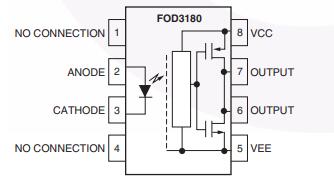
FOD3180 Application Circuit
The 0.1uF bypass capacitor is located between pins 5 and 8. A capacitor in series with a current limiting resistor makes up the load (pin7). A power MOSFET transistor's gate to source capacitance is represented by the capacitor. For the IC to respond, the input signal must have a minimum impedance of 50 ohms and a rise time of 75 nS or greater.
FOD3180 Package

FOD3180 Package
FOD3180 Manufacturer
On Semiconductor (Nasdaq: ON) is a manufacturer engaging itself in reducing energy use. It features a comprehensive portfolio of power, signal management, and logic, custom solutions that are energy efficient. It acts as a world-class supply chain with high reliability and a network of manufacturing facilities, sales, offices, and design centres in key markets through North America, Europe, and the Asia Pacific regions.
Note: More details can be found at the FOD3180 Optocoupler datasheet shown below.
Datasheet PDF
- Datasheets :
FOD3180-ON-Semiconductor-datasheet-85521332.pdf
FOD3180-ON-Semiconductor-datasheet-86689723.pdf
FOD3180-ON-Semiconductor-datasheet-137315719.pdf
FOD3180-Fairchild-Semiconductor-datasheet-5320129.pdf
FOD3180-Fairchild-datasheet-162992.pdf
FOD3180-Fairchild-Semiconductor-datasheet-14045932.pdf
- Environmental Information :
- RohsStatement :
- PCN Design/Specification :
- PCN Packaging :
Popularity by Region
What is FOD3180 integrated?
The IC is integrated with under-voltage protection to avoid common pulses and retain either of the binary pin states.
How many VRMS does FOD3180 provide?
It provides 5000 VRMS for safe electric signal transmission and electrical isolation.
What package is FOD3180 available in?
The device is packaged in an 8-pin dual-in-line housing compatible with 260*C reflow processes for lead-free solder compliance.
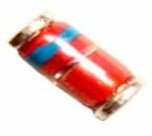 DL4004 Glass Passivated Rectifier: Features, Pinout, and Datasheet
DL4004 Glass Passivated Rectifier: Features, Pinout, and Datasheet09 February 2022490
 LM358 Dual Op-Amp vs LM393 Dual Comparator
LM358 Dual Op-Amp vs LM393 Dual Comparator12 August 20226737
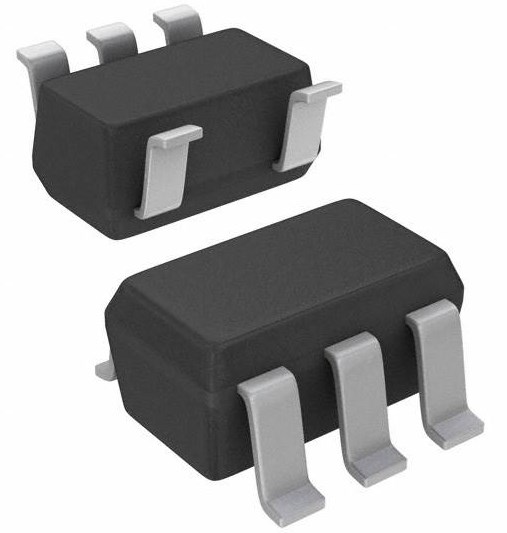 TPS560200DBVR: 1 7-V, D-CAP2 Mode, SOT-23 package
TPS560200DBVR: 1 7-V, D-CAP2 Mode, SOT-23 package25 February 2022551
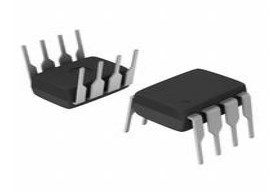 LM193 Dual Voltage Comparator: Pinout, Equivalent and Datasheet
LM193 Dual Voltage Comparator: Pinout, Equivalent and Datasheet06 November 20211741
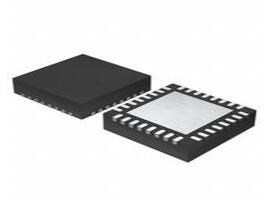 LPC824 Microcontroller: Datasheet, Pinout, NXP LPC824
LPC824 Microcontroller: Datasheet, Pinout, NXP LPC82423 August 20211686
 TMP86PH06UG(C)JZ Microcontroller Series: Technical Insights
TMP86PH06UG(C)JZ Microcontroller Series: Technical Insights29 February 202475
![2CR5 Lithium battery[FAQ+Video]: Equivalents, Datasheet, and 2CR5 vs CR123A](https://res.utmel.com/Images/Article/d457194e-da35-4dca-b816-3e43f317da63.jpg) 2CR5 Lithium battery[FAQ+Video]: Equivalents, Datasheet, and 2CR5 vs CR123A
2CR5 Lithium battery[FAQ+Video]: Equivalents, Datasheet, and 2CR5 vs CR123A20 April 20227865
 STM8S105K4T6C Microcontroller: Features, Specifications and Applications
STM8S105K4T6C Microcontroller: Features, Specifications and Applications10 June 2025103
 New Crisis in Semiconductors: Neon Gas Prices Soar 9 Times
New Crisis in Semiconductors: Neon Gas Prices Soar 9 Times21 March 20225043
 What is UWB (Ultra-wideband)?
What is UWB (Ultra-wideband)?04 June 20216242
 Analog-to-Digital Converters (ADCs): Decrypting Resolutions and Sampling Rates
Analog-to-Digital Converters (ADCs): Decrypting Resolutions and Sampling Rates24 February 20224154
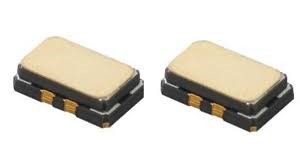 Introduction to Types of Oscillator Circuits
Introduction to Types of Oscillator Circuits20 February 202114054
 What are Comparators?
What are Comparators?03 December 20205060
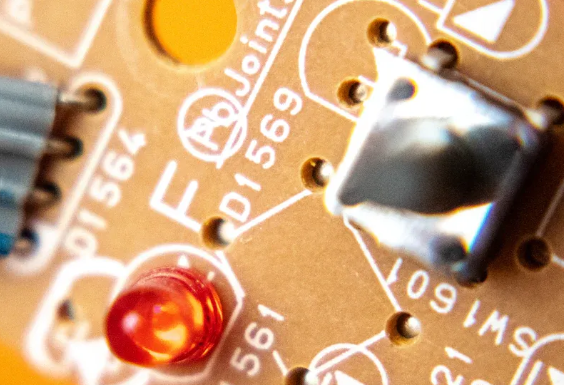 How 10k Resistor Color Code Stacks Up Against 220 and 100k
How 10k Resistor Color Code Stacks Up Against 220 and 100k03 September 2025632
 Top 10 IC Design Companies in China
Top 10 IC Design Companies in China13 January 20227558
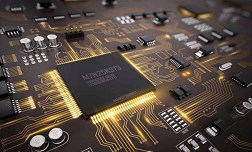 What is inductor: Symbol, Applications and Types
What is inductor: Symbol, Applications and Types04 January 20228463
ON Semiconductor
In Stock: 63212
United States
China
Canada
Japan
Russia
Germany
United Kingdom
Singapore
Italy
Hong Kong(China)
Taiwan(China)
France
Korea
Mexico
Netherlands
Malaysia
Austria
Spain
Switzerland
Poland
Thailand
Vietnam
India
United Arab Emirates
Afghanistan
Åland Islands
Albania
Algeria
American Samoa
Andorra
Angola
Anguilla
Antigua & Barbuda
Argentina
Armenia
Aruba
Australia
Azerbaijan
Bahamas
Bahrain
Bangladesh
Barbados
Belarus
Belgium
Belize
Benin
Bermuda
Bhutan
Bolivia
Bonaire, Sint Eustatius and Saba
Bosnia & Herzegovina
Botswana
Brazil
British Indian Ocean Territory
British Virgin Islands
Brunei
Bulgaria
Burkina Faso
Burundi
Cabo Verde
Cambodia
Cameroon
Cayman Islands
Central African Republic
Chad
Chile
Christmas Island
Cocos (Keeling) Islands
Colombia
Comoros
Congo
Congo (DRC)
Cook Islands
Costa Rica
Côte d’Ivoire
Croatia
Cuba
Curaçao
Cyprus
Czechia
Denmark
Djibouti
Dominica
Dominican Republic
Ecuador
Egypt
El Salvador
Equatorial Guinea
Eritrea
Estonia
Eswatini
Ethiopia
Falkland Islands
Faroe Islands
Fiji
Finland
French Guiana
French Polynesia
Gabon
Gambia
Georgia
Ghana
Gibraltar
Greece
Greenland
Grenada
Guadeloupe
Guam
Guatemala
Guernsey
Guinea
Guinea-Bissau
Guyana
Haiti
Honduras
Hungary
Iceland
Indonesia
Iran
Iraq
Ireland
Isle of Man
Israel
Jamaica
Jersey
Jordan
Kazakhstan
Kenya
Kiribati
Kosovo
Kuwait
Kyrgyzstan
Laos
Latvia
Lebanon
Lesotho
Liberia
Libya
Liechtenstein
Lithuania
Luxembourg
Macao(China)
Madagascar
Malawi
Maldives
Mali
Malta
Marshall Islands
Martinique
Mauritania
Mauritius
Mayotte
Micronesia
Moldova
Monaco
Mongolia
Montenegro
Montserrat
Morocco
Mozambique
Myanmar
Namibia
Nauru
Nepal
New Caledonia
New Zealand
Nicaragua
Niger
Nigeria
Niue
Norfolk Island
North Korea
North Macedonia
Northern Mariana Islands
Norway
Oman
Pakistan
Palau
Palestinian Authority
Panama
Papua New Guinea
Paraguay
Peru
Philippines
Pitcairn Islands
Portugal
Puerto Rico
Qatar
Réunion
Romania
Rwanda
Samoa
San Marino
São Tomé & Príncipe
Saudi Arabia
Senegal
Serbia
Seychelles
Sierra Leone
Sint Maarten
Slovakia
Slovenia
Solomon Islands
Somalia
South Africa
South Sudan
Sri Lanka
St Helena, Ascension, Tristan da Cunha
St. Barthélemy
St. Kitts & Nevis
St. Lucia
St. Martin
St. Pierre & Miquelon
St. Vincent & Grenadines
Sudan
Suriname
Svalbard & Jan Mayen
Sweden
Syria
Tajikistan
Tanzania
Timor-Leste
Togo
Tokelau
Tonga
Trinidad & Tobago
Tunisia
Turkey
Turkmenistan
Turks & Caicos Islands
Tuvalu
U.S. Outlying Islands
U.S. Virgin Islands
Uganda
Ukraine
Uruguay
Uzbekistan
Vanuatu
Vatican City
Venezuela
Wallis & Futuna
Yemen
Zambia
Zimbabwe











